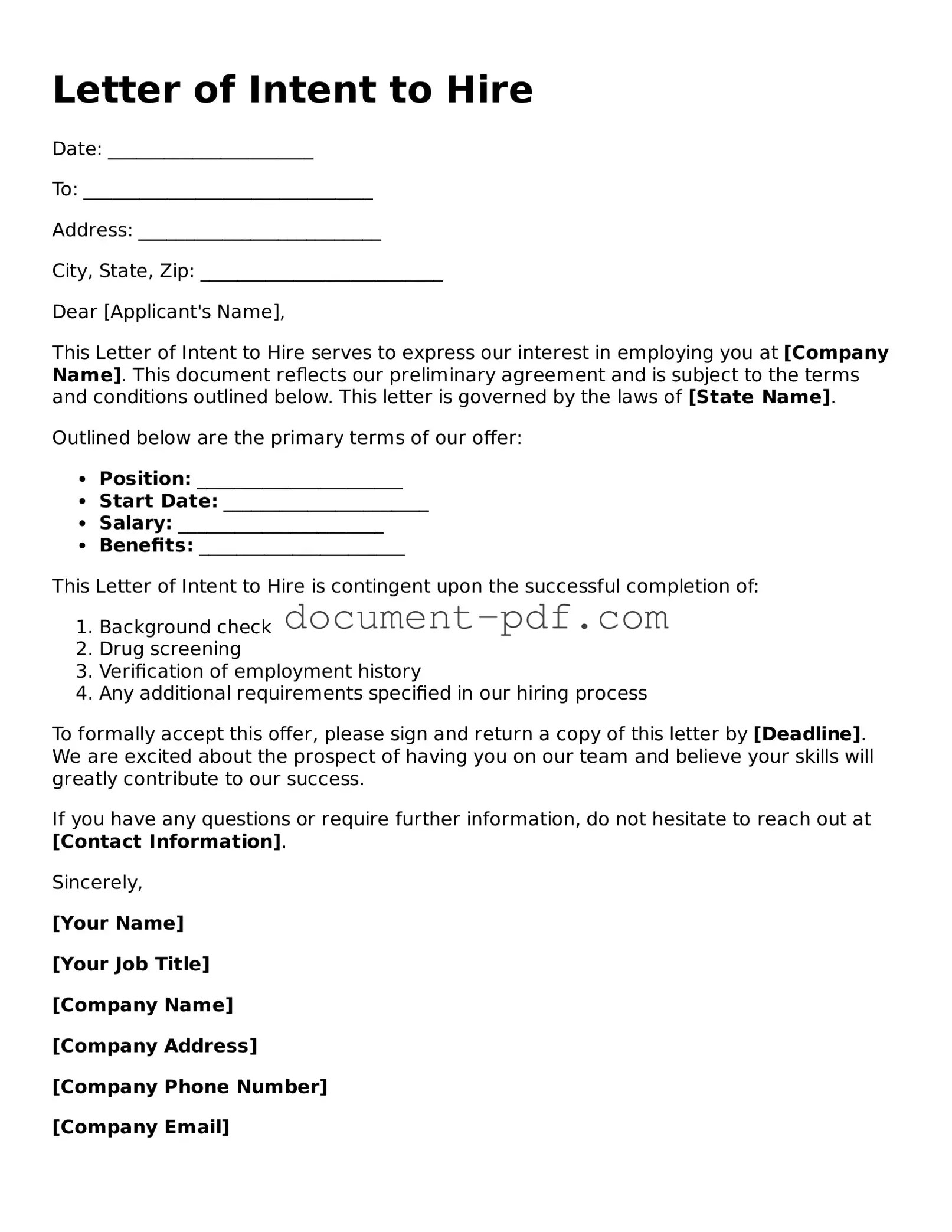Letter of Intent to Hire
Date: ______________________
To: _______________________________
Address: __________________________
City, State, Zip: __________________________
Dear [Applicant's Name],
This Letter of Intent to Hire serves to express our interest in employing you at [Company Name]. This document reflects our preliminary agreement and is subject to the terms and conditions outlined below. This letter is governed by the laws of [State Name].
Outlined below are the primary terms of our offer:
- Position: ______________________
- Start Date: ______________________
- Salary: ______________________
- Benefits: ______________________
This Letter of Intent to Hire is contingent upon the successful completion of:
- Background check
- Drug screening
- Verification of employment history
- Any additional requirements specified in our hiring process
To formally accept this offer, please sign and return a copy of this letter by [Deadline]. We are excited about the prospect of having you on our team and believe your skills will greatly contribute to our success.
If you have any questions or require further information, do not hesitate to reach out at [Contact Information].
Sincerely,
[Your Name]
[Your Job Title]
[Company Name]
[Company Address]
[Company Phone Number]
[Company Email]
